 1998 Renault Clio II (Phase I) 3-door Dimensions, Size & Specs
1998 Renault Clio II (Phase I) 3-door Dimensions, Size & SpecsMeasurements of the 1998 Renault Clio II 3-door, engineered for optimal performance and comfort
| Dimensions | |
|---|---|
| Length: | 3773 mm148.5 in12.4 ft |
| Width: | 1640 mm64.6 in5.4 ft |
| Width (Opened Mirrors): | 1940 mm76.4 in6.4 ft |
| Height: | 1409-1417 mm55.5-55.8 in4.6-4.6 ft |
| Trunk Capacity: | 255 liter9.0 cu ft |
| Trunk Capacity (Max): | 1035 liter36.6 cu ft |
| Weight Specifications | |
| Curb Weight: | 880-1035 kg1940-2282 lbs |
| Maximal permitted Weight: | 1420-1550 kg3131-3417 lbs |
| Roof Load: | 60 kg132 lbs |
| Tire Specifications | |
| Rims Sizes: | 14-inch rims:
|
| Tire Sizes: |
|
The Renault Clio II (Phase I) 3-door hatchback, produced from 1998 to 2001, is a quintessential example of a compact European car perfectly balancing style, practicality, and efficient urban mobility. With an overall length of 3773 mm (148.5 inches), a width of 1640 mm (64.6 inches), and a height ranging between 1409 mm and 1417 mm (55.5 to 55.8 inches), the Clio II offers a compact footprint suitable for city driving and tight parking spaces. When the exterior mirrors are opened, the total width expands to 1940 mm (76.4 inches), a useful consideration for navigating narrow streets or parking. The curb weight of this model varies between 880 kg and 1035 kg (1940 - 2282 lbs), making it relatively lightweight, which supports its fuel efficiency and agile handling. Its maximum weight capacity ranges from 1420 kg to 1550 kg (3130 - 3417 lbs), allowing a decent payload for passengers and cargo. The luggage compartment offers a practical space of 255 liters (9.0 cubic feet), which can be significantly expanded to 1035 liters (36.5 cubic feet) by folding the rear seats down, enhancing its versatility for carrying larger items. The Renault Clio II supports a roof load of up to 60 kg (132 lbs), accommodating additional cargo carriers or roof racks for extra storage needs. Wheel and tire options ensure a balanced combination of comfort and road grip, ranging from 6J x 14-inch rims up to 7J x 15-inch rims, fitted with various tire sizes including 185/60 R14, 195/50 R15, and others, providing options for handling preferences and road conditions. Overall, the Renault Clio II (Phase I) 3-door hatchback remains an iconic compact vehicle of its time, offering well-rounded dimensions and specifications ideal for urban and suburban driving while maintaining the classic Renault design ethos.
Discover the standout features that make the 1998 Renault Clio II 3-door a leader in its class
Have a question? Please check our knowledgebase first.
The Renault Clio II (Phase I) 3-door hatchback measures 3773 mm (148.5 inches) in length, 1640 mm (64.6 inches) in width, and has an overall height ranging between 1409 mm and 1417 mm (55.5 to 55.8 inches). When the mirrors are opened, the width extends to 1940 mm (76.4 inches), providing a clear picture of the vehicle's spatial footprint, which is essential for parking and maneuvering in urban environments.
The curb weight of the Renault Clio II (Phase I) 3-door ranges from 880 kg to 1035 kg (1940 to 2282 lbs), depending on the specific model and equipment level. Its maximum permissible weight varies between 1420 kg and 1550 kg (3130 to 3417 lbs). These weights ensure an efficient balance between agility and safety, with the vehicle designed to carry passengers and cargo effectively within these specified limits.
The Renault Clio II (Phase I) offers a standard luggage capacity of 255 liters (9 cubic feet) with the rear seats in use, which is sufficient for daily groceries or small luggage. When the rear seats are folded down, the luggage capacity increases substantially to 1035 liters (36.5 cubic feet), making it versatile for carrying larger items or extended luggage for trips, enhancing the vehicle's practicality despite its compact dimensions.
This generation of the Renault Clio II supports a roof load limit of 60 kg (132 lbs). This means you can safely carry additional cargo such as roof boxes, bicycles, or other equipment on the roof rack without compromising vehicle stability or safety. It's important to adhere to this limit to avoid adversely affecting the car's handling or causing undue wear to the roof structure.
Yes, the Renault Clio II (Phase I) 3-door fits comfortably into a standard garage. With a length of 3773 mm (148.5 inches), width of 1640 mm (64.6 inches), and height up to 1417 mm (55.8 inches), it occupies a smaller footprint than typical garage dimensions, which commonly measure at least 2400 mm in width and 4800 mm in length (approximately 94.5 x 189 inches). This makes it suitable for most urban residential garages.
Compared to the Clio I, the Clio II (Phase I) 3-door shows moderate growth in dimensions, reflecting Renault's approach to enhancing interior space and comfort. The length increased slightly to 3773 mm (from Clio I's approximately 3700 mm), and the width grew to 1640 mm. This made the Clio II marginally larger while maintaining its compact agility. The height remained similar, preserving a low profile. The additional width and length improved cabin space and luggage capacity without making the car unwieldy.
The Renault Clio II (Phase I) 3-door is competitively sized within the supermini segment of the late 1990s to early 2000s. It is generally comparable in length and width to contemporaries like the Ford Fiesta Mk4 and Volkswagen Polo Mk4, which also ranged around 3700-3800 mm in length and 1600-1700 mm in width. While some rivals may offer marginally more interior space or engine options, the Clio II’s balanced dimensions offered a practical choice for urban driving combined with reasonable cargo capacity.
This generation of the Renault Clio came with a variety of rim sizes to suit different trims and performance variants, including 6J x 14, 7J x 15, 5.5J x 14, and 7J x 13. Corresponding tire sizes ranged from 165/65 R14, 185/60 R14, 195/50 R15, 165/70 R13 to 175/60 R14 and 175/65 R14. This broad spectrum allowed owners to select options that balanced ride comfort, handling, and aesthetics to fit their preferences and driving conditions.
The Renault Clio II (Phase I) saw slight variations in height between 1409 mm and 1417 mm (55.5 to 55.8 inches), which could result from different trim levels, suspension setups, or production adjustments. While minor, this difference can influence headroom inside the car slightly and may affect aerodynamic properties or ride comfort marginally. However, from a practical standpoint, the variation is negligible and does not notably impact daily usability or garage fitment.
The variety in tire sizes, such as 185/60 R14 and 195/50 R15, affects the Clio II’s handling, grip, and ride comfort. Larger and wider tires typically provide better road grip and sharper cornering, enhancing sporty driving characteristics, but may slightly reduce ride comfort. Smaller tires can improve absorbency over bumps and reduce road noise. This versatility let Renault tailor the Clio to a range of driving preferences, from everyday commuting to more spirited driving.
Discover similar sized cars.
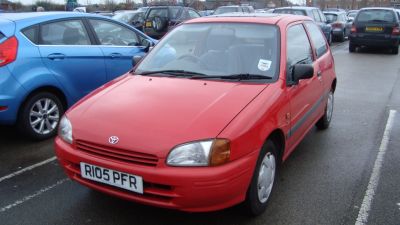
| Production: | 1996-1999 |
|---|---|
| Model Year: | 1996 |
| Length: | 3740 mm147.2 in |
| Width: | 1635 mm64.4 in |
| Height: | 1400 mm55.1 in |

| Production: | 2012-2015 |
|---|---|
| Model Year: | 2012 |
| Length: | 3795 mm149.4 in |
| Width: | 1680 mm66.1 in |
| Height: | 1427 mm56.2 in |

| Production: | 2010-2012 |
|---|---|
| Model Year: | 2010 |
| Length: | 3795 mm149.4 in |
| Width: | 1680 mm66.1 in |
| Height: | 1427 mm56.2 in |

| Production: | 1994-2000 |
|---|---|
| Model Year: | 1994 |
| Length: | 3715-3744 mm146.3-147.4 in |
| Width: | 1633-1655 mm64.3-65.2 in |
| Height: | 1407-1420 mm55.4-55.9 in |
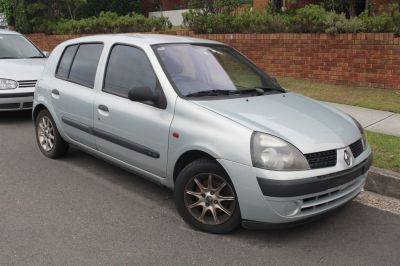
| Production: | 2001-2003 |
|---|---|
| Model Year: | 2001 |
| Length: | 3773 mm148.5 in |
| Width: | 1940 mm76.4 in |
| Height: | 1417 mm55.8 in |
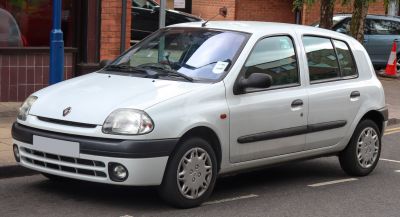
| Production: | 1998-2001 |
|---|---|
| Model Year: | 1998 |
| Length: | 3773 mm148.5 in |
| Width: | 1940 mm76.4 in |
| Height: | 1417 mm55.8 in |
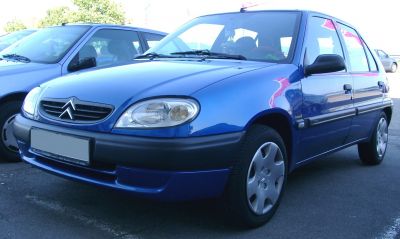
| Production: | 1999-2002 |
|---|---|
| Model Year: | 2000 |
| Length: | 3718 mm146.4 in |
| Width: | 1595 mm62.8 in |
| Height: | 1368 mm53.9 in |
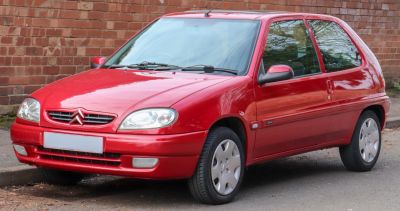
| Production: | 1999-2003 |
|---|---|
| Model Year: | 2000 |
| Length: | 3718 mm146.4 in |
| Width: | 1595-1620 mm62.8-63.8 in |
| Height: | 1360-1370 mm53.5-53.9 in |
